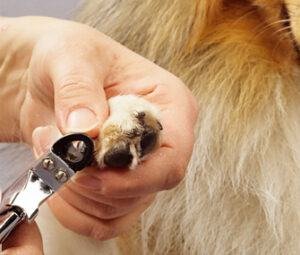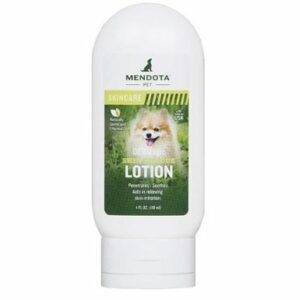LifeWithMyDogs is supported by our audience. When you purchase through one of our links, we may earn a small affiliate commission. As an Amazon Associate I earn from qualifying purchases. Your cost is not affected.
**********
Protect Your Dog’s Paws Every Season
All pet parents want the best for their pets, but one thing you may not have considered is protecting their paws from the heat or cold. Your dog’s paw problems may not appear to be an obvious concern to consider right away, but if you don’t treat them promptly, you may find that your poor dog is in a lot of pain and agony.
While dogs’ paws are pretty tough and can withstand a lot, there is a limit to how much your pet’s feet can take, and when paw problems do arise, they can last a long time and be challenging to treat. When your dog has a paw problem, it might be difficult to treat because he needs to walk on his paws all of the time, and the damaged area doesn’t have much time to recover.
Because prevention is better than cure, especially when it comes to paw problems, you’ll want to know how to protect your dog’s paws throughout the year to avoid problems like pad burns, frostbite, and damaged nails. Let’s take a closer look at how to protect your dog’s paws every season.
How to Protect Your Dog’s Feet on Snow
Because ice and cold can be particularly damaging to paws, you should pay extra attention to them. Below are some ways how to protect your dog’s feet on snow.
Inspect Your Dog’s Pads
Examine the paw pads attentively, just as you would before a summer trek, to make sure there are no injuries that your planned expedition might aggravate.

Trim Your Dog’s Nails
Keeping your dog’s nails cut is always a good idea. A broken nail can bleed, which is a problem you don’t want in the winter. Long nails can also cause your dog’s toes to splay more apart when walking, exposing vulnerable regions between toes to snow and ice accumulation.

Try Winter Booties for Your Dog
Many dog owners consider booties the most obvious approach to protecting their dog’s paws. You can even get dog winter boots with a fleece inside for added warmth. And booties are indeed a terrific way to keep your dog’s feet warm in the winter—if you purchase a pair that fits well and take the time to acclimatize your dog to wear them. It’s also a good idea to double-check and re-adjust the fit after around 15 minutes of outdoor use.

Use Dog Paw Wax
Sled dog owners will tell you that preventing snow from adhering to dog paws in the first place is an excellent method to avoid balls of ice from developing. When snow accumulates, the dog’s body heat can melt the snow, which then refreezes into ice clumps. Rubbing some form of “musher’s wax” on your dog’s paws will help keep snow from clinging to its paws in the first place. If a dog licks the wax off, these paw waxes are designed to be harmless.

How to Protect Your Dog’s Paws From Hot Pavement
Summer can be tremendous pain for everyone, and you’re probably already trying to keep your dog out of the heat. You might not realize how much the sidewalk outside feels like scorching coals if you’re wearing shoes, but your dog does.
Your dog’s paw pads are beautiful things, capable of protecting your pet from the elements. But even their paw pads can’t stand up to excessive heat. If you place your palm on the pavement and find it to be unbearably hot, you can be sure your dog will as well. Let’s learn several ways to protect your dog’s paws from hot pavement.
Paw Protection Wax
This wax is helpful in more than just the hot summer months. You can also use it to defend yourself in the cold. You can also wear it before hiking in a briary or rocky region. This item is an excellent alternative for dogs who dislike wearing shoes (which includes most canines).

Dog Leggings
Do you want a product that is both fashionable and functional? Leggings that fit over your dog’s paws and protect them from the searing blacktop are available. Some items, such as this, may fit awkwardly or distract your dog while you’re out and about. This, like any other piece of clothing, will not fit all dogs. However, if your dog doesn’t mind wearing accessories or apparel, you can give it a try.

Dog Booties
Booties can be very useful. Therefore they may be a sensible investment. Your dog can not only wear their favorite pair of shoes in the summer, but they can also wear these booties in the winter to protect themselves from the cold.
It is a cold, harsh fact that not all dogs enjoy wearing shoes. So, while it’s a significant barrier to place between your dog’s paws and the pavement, it’s not always going to work for every dog. Also, the fit is critical—some booties slip and slide, irritating the paws. If you decide to buy a pair, make sure you measure carefully to ensure a proper fit.

Use Doggy Gear
You may always use doggy-friendly gear for fun if your dog doesn’t require the exercise but still wants to come on an adventure. Alternatively, you may use these products to relocate your dog from heated pavements to a cool, grassy surface where their paw pads will be pain-free.
Doggy backpacks are designed exclusively to transport your canine companion. You can choose from various designs, so choose the one that best suits your dog. Plus, you’ll have more storage room for their food, drink, and poop bags.
Of course, hurling them up on your back would be difficult if you had a large breed. This method, however, is best for small to medium-sized breeds. If the weather is very hot, remember to invest in a backpack with adequate ventilation to avoid overheating.

Topical Moisturizers for Paws
Before going for a stroll in the winter, you should also moisturize your pet’s paws with a dog-safe lotion or balm. You could apply dog paw balm, Musher’s Secret paw wax, beeswax moisturizer, and shea butter. If you don’t have suitable pet products for paw care, you can always use petroleum jelly. You can also use coconut oil to moisturize your dog’s paws.

In hot areas, coconut oil for dogs can also be used as a paw soother. You can massage it on your dog’s paws to ease discomfort and burns when he walks in hot areas. You may put on some paw wax before going on a walk to protect him as well. Walking your dog when it’s cooler outside, such as early in the morning or later at night, is also an excellent exercise in the summer. If you must stroll in the heat, seek cooler locations in the shade and on grass.

How to Treat Sore or Cracked Dog Paw Pads
Do a daily paw check on your dog for a minute or two. Examine their pads for any rips or tears. Check for anything that might have gotten lodged between their toes and paw webbings, such as hazardous foxtails or small rocks. If you’re concerned about a paw pad injury in your dog, make an appointment with your veterinarian.
Specific paw pad injuries can be excruciatingly unpleasant and even infectious. If the injury appears to be mild and superficial, apply paw wax or balm, cover with a baby sock, and seal with medical tape over the sock.
How to Trim Around Your Dog’s Paw Pads
Cleaning and trimming the hair that grows between your dog’s paws keep their paws healthy and provides extra traction on slick surfaces in your home. It’s also easier to identify an issue if the feet are well-kept. Always use clippers to trim the hair between your dog’s paws instead of scissors. If you’re not sure or don’t feel comfortable clipping the hair on your dog’s feet, their groomer can do it at their next grooming visit.
Conclusion
When walking, hiking, or playing on uneven terrain or in high weather, the best approach to protect your dog’s paw pads from harm is to have them wear dog booties. If your dog is having trouble wearing booties, consider investing in paw pad wax or balm, which will help condition and protect your dog’s paw pads.
Your dog will be able to enjoy their hikes and walks all year long if you take some simple preventive steps, including frequent paw inspections, training your dog’s pads to tougher terrain, and applying booties or paw pad wax or balm.
Read More:
https://www.aspca.org/pet-care/dog-care



